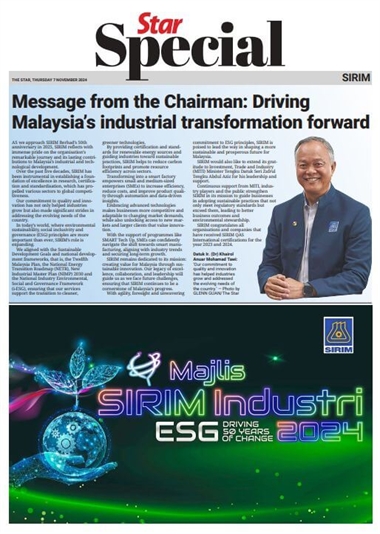
PETALING JAYA: Malaysia’s lower than average performance in the latest Trends in International Mathematics and Science Study (TIMSS) was weighed down by the poorer performance of students from lower socioeconomic backgrounds.
This is among the findings of a deep-dive study by The Star on the TIMSS 2023 assessment, with experts calling on the government to give students from lower socioeconomic backgrounds access to better quality education
TIMSS, which is done once every four years, compares the performance of students in the two subjects.
The 2023 assessment and context questionnaire scale was conducted in 58 countries and territories. It found Malaysian students from middle and higher socioeconomic background achieving better results in mathematics and science.
According to the 2023 TIMSS report, more than two-thirds (69%) of Malaysian students from lower socioeconomic backgrounds sat for the global assessment.
Students with middle socioeconomic status made up 22% of those evaluated in Malaysia, and those of higher socioeconomic background accounted for the remaining 9%.
Universiti Sains Malaysia (USM) School of Educational Studies Professor in Curriculum Studies and Education Policy Prof Dr Hazri Jamil said the disparity between the students from the different socioeconomic status in Malaysia stems largely from unequal access to educational resources, such as quality tutoring, learning materials, conducive home environments, and exposure to learning activities.
“Students from high-income households are more likely to benefit from personalised learning support, stable home conditions and more parental involvement compared to those from lower-income groups.”
He said these students are exposed to languages, values, and behaviour that align with schools and education performance reward.
Other factors that could possibly contribute to the achievement gap seen around the world is the limited access to technology and schools with fewer resources.
“This in many ways, is in contrast to students from low income groups,” he said.
Students with higher socioeconomic status generally had parents reporting more than 25 books in their home, at least one parent having finished university, and at least one parent in a professional occupation.
Students with lower socioeconomic status generally had parents reporting 25 or fewer books in their home, neither parent having gone beyond upper-secondary education, and neither parent being in a small business or a clerical/professional occupation.
All other students were classified as having middle socioeconomic status.
In January, The Star reported that another international assessment, the Programme for International Student Assesment (Pisa) scores tumbled across the Asean region, with Malaysia recording the biggest drop compared to Indonesia, Thailand and Vietnam.
TIMSS and Pisa are both international assessments that compare the performance of students in different countries, but TIMSS focuses on mathematics and science, while Pisa assesses reading, mathematics, and science literacy.
Prof Hazri said the differences between socioeconomic status accumulate over time and significantly impact performance, especially at the higher score tiers.
“Socioeconomic status affects more than just material access. It influences motivation , mindset, language exposure, and emotional well-being,” he said.
He also said systemic factors such as assessment formats may unintentionally favour those with greater capital or familiarity with test-taking environments.
“Hence, addressing socioeconomic status disparities requires a holistic and multi-level approach,” he said.
The TIMSS evaluation categorises students into three groups based on their home socioeconomic status: higher, middle and lower.
For maths, the international average score is 544 for students from higher socioeconomic status, 502 for middle socioeconomic status and 459 for lower socioeconomic status.
For science, the international average scores is 535 for students from higher socioeconomic status, 490 for middle socioeconomic status and 444 for lower socioeconomic status.
Malaysia scored significantly lower than the international average score for both subjects.
For Science, Malaysia scored 471 for students from higher socioeconomic status, which represented only 9% of students evaluated in TIMSS.
Students from middle socioeconomic status scored 453 while those from lower socioeconomic status scored 412.
For Maths, Malaysia scored 462 for those from higher socioeconomic status, 438 for middle socioeconomic status and 395 for students from lower socioeconomic status.
According to the TIMSS 2023 report, a higher share of Malaysian students only had some home educational resources, which includes having 11-25 books at home and either internet access or their own room, while students in other higher performing countries had better resources.
While Malaysia showed a smaller gap in achievement between socioeconomic groups, other countries like Singapore showed a more pronounced disparity.
Singapore recorded a significant difference in average scores between students from higher (653) and middle (603) socioeconomic status, with the lower group scoring 544.
UCSI University vice-chancellor Professor Emerita Datuk Dr Siti Hamisah Tapsir said that while being born into a more affluent family often results in better life chances, this is not the be-all and end-all as far as success and resilience are concerned.
“I’ve seen students from less-privileged backgrounds go on to achieve great success in life,” she said.
Prof Hamisah, who used to serve as director-general when the Education Ministry was merged and is passionate about educating the underserved, said the Malaysia Education Blueprint 2013-2025 emphasises revising the curricula to promote skills like critical thinking and creativity.
“The focus is to prepare students for an ever-changing world that is filled with global challenges.
“While this is positive, the right curricula can only be effectively applied by teachers who are passionate, digitally savvy, inclusive and adaptive,” she pointed out.
She added that students from less affluent backgrounds must be given greater access to quality education.










































